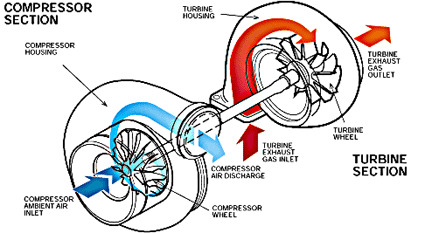|
Guys,
I'm trying to get through to people at Continental
and the turbocharger company for the exact part numbers for the Turbo used on
the "B" engine and the "E" engines.
I will post the answer as soon as it comes
through.
But, As far as I understand the
operation--
- If you increase the area of the "Turbine Exhaust
Gas Inlet" (nozzle) while the area of the "Turbine Exhaust Gas Outlet"
stays the same-- more power will be available to overcome compressor loads
that are trying to slow the turbine. This is what I understand
Continental did to allow us to use a lower rpm in cruise.
In any case we are dependent upon rpm of the rotor to
provide the compressed air at the pressure and volume we need.
It's easy to see that if we reduce the volume of
air entering the Turbine Exhaust Gas Inlet, the less torque will be available
to turn the compressor. At some point the compressor load will cause a
stall. I guess it's debatable whether or not it's compressor or turbine.
Results are the same. Compressor quits. As I understand it, and the
fix was to give the turbocharger more exhaust air volume at lower engine
rpm.
Charlie K.

turbo-parts.gif
|